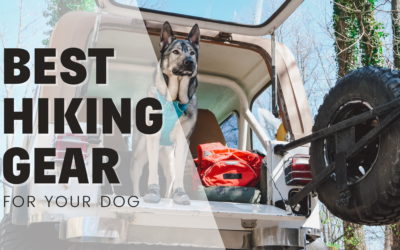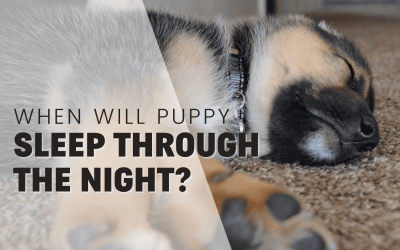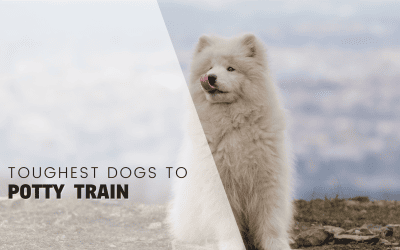In the world of dog training, ‘neutrality’ might not be the first term that comes to mind. Yet, it’s a vital concept that plays a huge role in shaping your pet’s behavior and your interaction with them.
Neutrality in dog training goes beyond the basic commands of ‘sit’, ‘stay’, or ‘fetch’. It empowers dogs with the crucial capability of remaining calm and composed amidst the everyday hustle and bustle, disturbances or distractions, presenting a whole new level of partnership with your dog.
Despite its immense benefits, neutrality training is often overlooked, misunderstood, or underestimated. This comprehensive guide aims to shed light on the ‘why’ and ‘how’ of teaching your dog neutrality, providing step-by-step instructions and expert advice that can bring a transformative change to your dog’s behavior and your relationship with them. So, embark on this insightful journey of understanding and training your furry friend for neutrality and experience the unequivocal bond it fosters between you and your beloved companion.

What Is Neutrality?
Neutrality is a core concept within socialization that is overlooked and neglected. It’s the idea that we should be able to see the world going on around them and not feel the need engage or react.
At some point, socialization became “Meet every dog and every person”. Now don’t get me wrong, meeting dogs and people is an important part of socialization, but it’s not the core concept of socialization.
Socialization is about learning to thrive in the weird world we humans created, that dogs typically aren’t suited to – and that is a process that does not involve meeting everyone.
Training your dog for neutrality helps them understand that not every situation requires their reaction. That they don’t need to introduce themselves to every dog or person.
It promotes better cohabitation, reduces dogs’ anxiety, and allows you to have more peaceful and predictable interactions both in and out of the home. This is incredibly significant, especially in settings where dogs are exposed to frequent changes in environment or social situations, and it boosts the effectiveness of their overall training (particularly in a prospect service dog).
Benefits for the Dog
- Reduction in anxiety and stress caused by distractions or disturbances
- Increased self-control and composure in various environments
- Improved social skills and adaptability to changing situations
- Enhanced overall obedience and responsiveness to owner’s commands
- Fewer instances of aggressive, reactive, or unwanted behaviors
- Increased sense of safety, security, and confidence
This can be particularly powerful for a reactive dog, and understanding that we won’t take a reactive dog from being reactive to being the life and soul of the dog park is a much more reasonable expectation. But, to be honest? Ditching the aggressive behavior and being able to have a relaxing time on a walk with our dog is usually all dog owners want!
But even if you don’t have a reactive dog, whether you have older dogs, a new dog, a young pup, or an adult dogs who’s just struggling – these sorts of training sessions are usually way less pressure and way more beneficial.
Benefits for the Owner
- More predictable and manageable behaviors in diverse situations
- Easier integration of the dog into social events and outings
- Enhanced owner-dog relationship built on trust and understanding
- Reduction in situations that may lead to injuries or property damage
- Improved peace of mind, knowing the dog remains safe and under control
- Greater freedom and possibilities for activities with the dog in public spaces
One of my favourite things is knowing that our best friend is able to confidently assess and react to situations and react appropriately.
How Do You Teach Neutrality To Dogs?
The good news is that any dog can learn to relax in the presence of others. Teaching your dog neutrality is a process that requires time, dedication, and consistency. Here is a general process to teach neutrality to dogs:
Preparation
Understand what stimulates your dog: It’s essential to know what distractions your dog repeatedly reacts to, such as other animals, loud noises, or people. Start with less distracting environments and gradually expose your dog to more distracting situations. This is my favourite exercise for teaching neutrality.
Techniques for Teaching Neutrality
Pick a park, or some neutral territory for your pup to learn in, find yourself a spot somewhere a little off the beaten path, where you’re less likely to be bothered by local dogs, and can sit and watch without fear they’re going to run up to you.
- Redirecting Attention: Encourage your dog to focus on you instead of other distractions in the environment. This can involve using treats or toys that your dog loves. By doing so, the dog learns that it is more rewarding to pay attention to you than other distractions.
- Build Distance: When it comes to your dog struggling with a particular stimulus, then it means we are too close. Build more distance and only close that distance when your dog is doing well at that distance
- Rewarding Neutrality: Praise and reward your dog when it doesn’t respond to the identified distractions – e.g. for good behavior in the presence of other dogs. Over time, your dog will associate ignoring these distractions with a positive outcome, and the next step is decreasing your distance. (note: starting with some high-value treats is a great idea, particularly if your dog does exhibit reactive behavior.)
All we’re doing here is simply training our dog that not every place that has things going on means they’re getting social interactions! We can then start transferring this to walking past other dogs, and
Continual Practice
Neutrality is not something that can be achieved in a few days. It’s going to require repeated exposure to diverse scenarios. The goal is to teach the dog to maintain composure around distractions.
Please note that each dog is different and might not respond the same way to the training methods mentioned. It is essential to remain patient, considerate, and consistent throughout the training process.
You can explore different environments to increase ;
- Watching traffic
- Watching stores (pet stores, hardware stores)
- Watching parks
- Watching at the vets
This is honestly like magic for a fearful dog!
Stepping it up further
As a professional trainer, I love giving my clients this task, because it gives them a fundamental to build on, but how you build on this? Is to observe, learn and watch body language your dog displays in different situations and learning it – and your dog’s body language is always a little unique to them (though there are broad strokes we can learn).
By familiaring ourselves with things like the ladder of aggression, signs of stress, displacement signals, and how to tell if your dog is relaxed. We’re of course looking to understand our dogs are relaxed, so it makes certain that our pup is creating a positive association between relaxation and the world, that the world doesn’t need to be scary, it doesn’t need to be a difficult time. And that calm behavior is the most important thing.
You can also try grabbing a long line and seeing if a little more freedom will allow them to make the right decisions time after time.
Remember: Positive Reinforcement Only
Any modern, reputable professional dog trainer will agree that we only use positive reinforcement in dog training. There is no excuse for pressuring our dogs with the use of prong collars, slip leads or similar. Our dog’s safety is paramount! And curating positive interactions has scientifically been shown, time and time again, to be the best way to meet our dog’s needs and to create a confident dog!
Neutrality is a Life Skill
Neutrality training is an integral but often overlooked aspect of dog training. It allows our faithful companions to live a stress-free, composed, and confident life, acting as a solid foundation for all other activities and behaviors. By teaching your dog neutrality, you not only provide them with a valuable skill but also create an elevated bond of trust, understanding, and cooperation.
Remember, patience and consistency are key. This journey is neither a race nor a competition. It’s about enhancing communication with your furry friend, providing them with the skills they need to stay calm and composed amid distractions.
In delving into the world of neutrality training, remember that each dog is unique and might not respond to techniques in the same way. It’s crucial to stay patient, consistently reinforcing positive behaviors with rewards and understanding their unique personalities and stimulants.
In the end, all efforts will pay off when you have a well-behaved and neutral dog, ready to face the world calmly by your side. A dog that understands neutrality is a sheer joy to be around, opening up new possibilities for cohabitation, taking part in social events together, going on adventures, and much more. So, start today, and transform your dog’s training journey with the incredible art of neutrality.
If you’re struggling with this type of behavior, have a reactive dog, or can’t capture that relaxed behavior, you can always involve a certified trainer or behavior consultant to help you overcome!

Author, Ali Smith
Ali Smith is a professional, qualified, and multi-award winning trainer is the founder of rebarkable. She has always believed animals deserve kindness and champions force free methods. Believing that dog guardians will all choose the kindest options if proper information is provided, she aims to help all dog guardians who need it and make dog training as accessible as possible
Ali lives win Maryland, US with her husband and her three dogs.






0 Comments